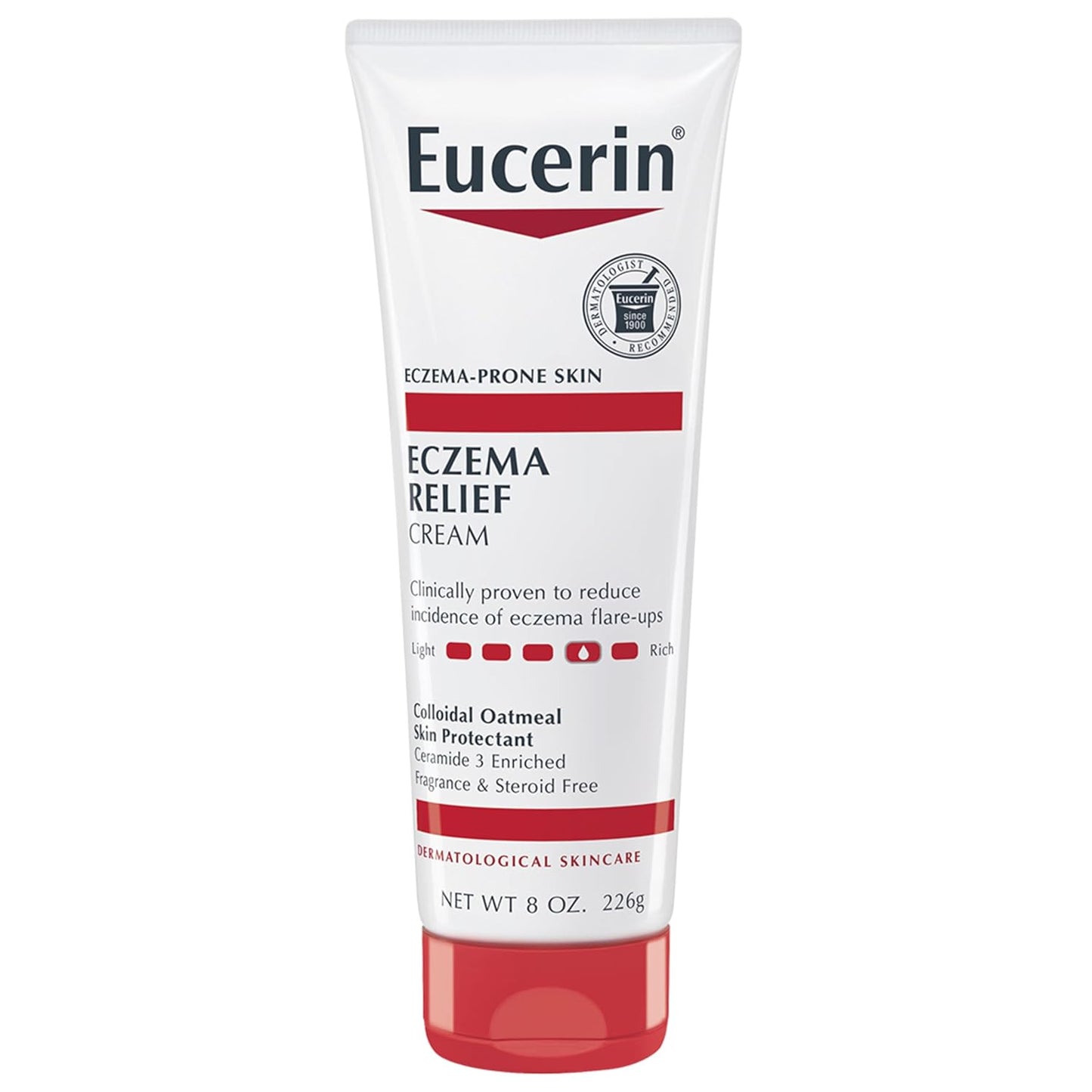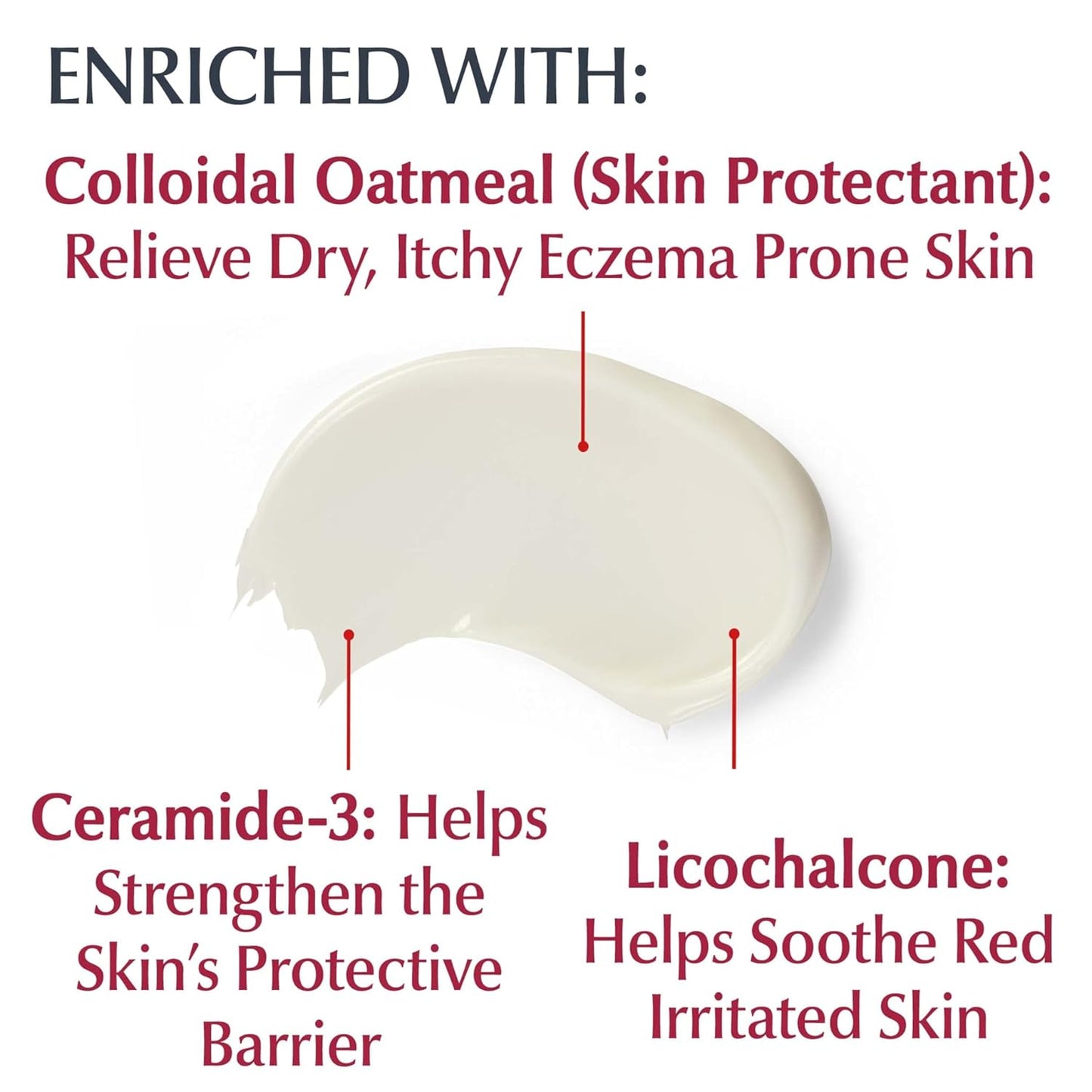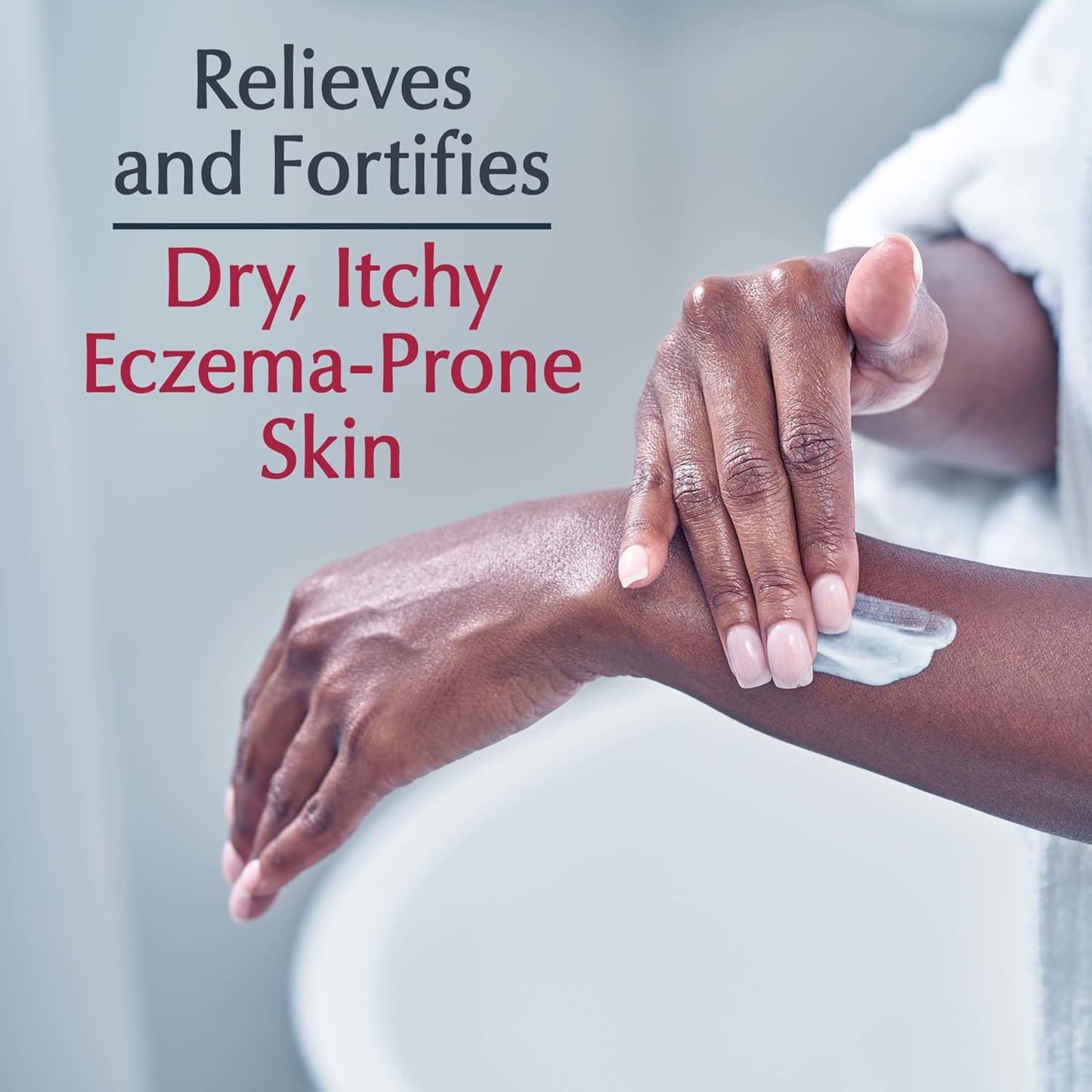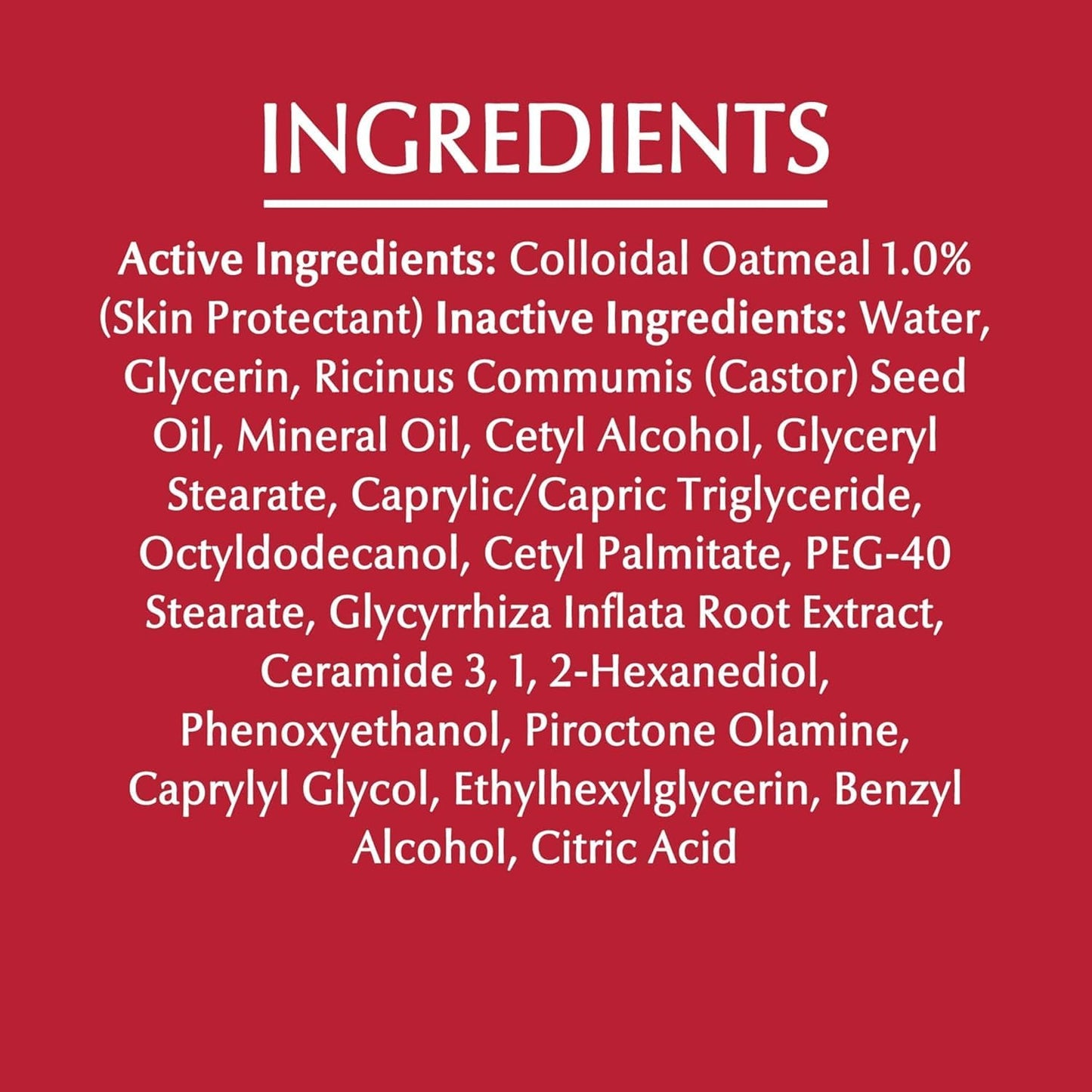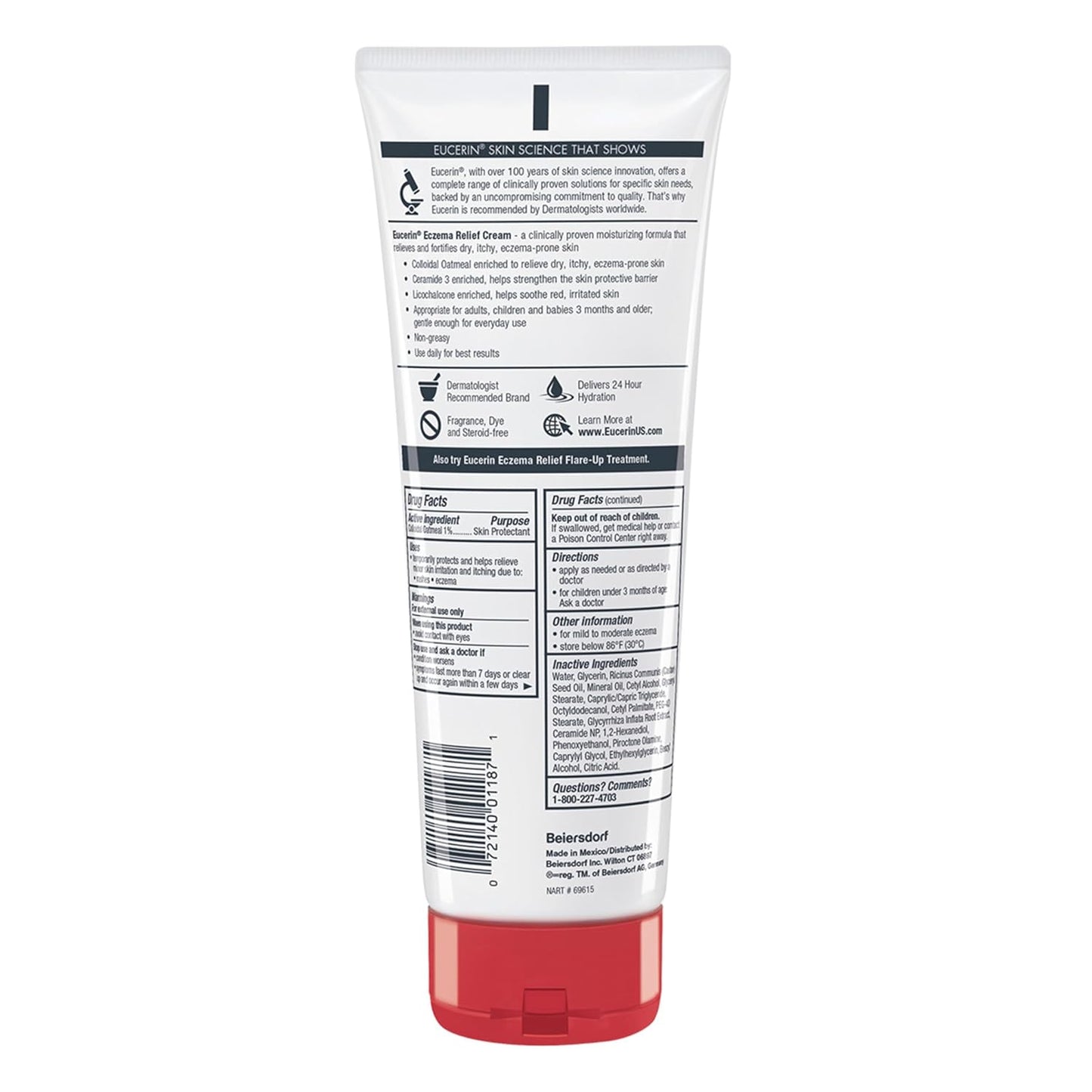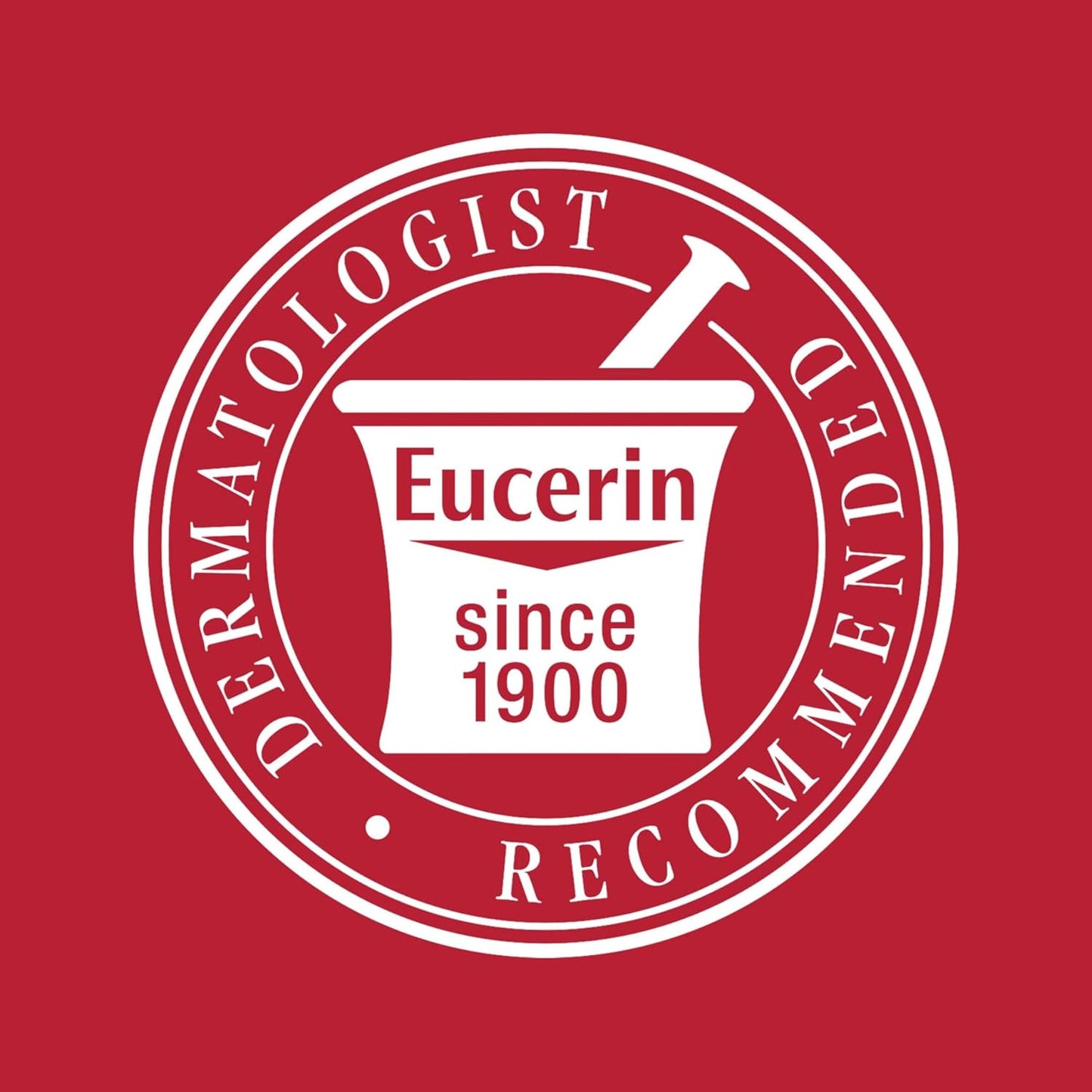Sourvitamins
Eucerin Eczema Relief Cream, Body Lotion, Moisturizing Eczema Cream with Colloidal Oatmeal 226 g
Eucerin Eczema Relief Cream, Body Lotion, Moisturizing Eczema Cream with Colloidal Oatmeal 226 g
Couldn't load pickup availability
From the manufacturer


Eczema Relief Body Cream
Eucerin Eczema Relief Body Cream is clinically proven to relieve itching, dryness and minor irritations due to eczema. Its fast-absorbing formula is enriched with Colloidal Oatmeal, Ceramide-3, and Licochalcone. In a clinical study, 4 out of 5 children remained flare-free for 6 months.*
*J Drugs Dermatol Children's Clinical (2015);14478-479

-

-

What is Eczema?
Eczema is a chronic skin condition that causes the skin to become irritated, usually accompanied by an itchy rash.
-

-

Eczema affects the skin's ability to keep moisture in and irritants out, eventually leading to dry, cracked skin. It is important to hydrate skin daily to help maintain its natural barrier, which keeps moisture in and irritants out.

Product Description
Eucerin Eczema Relief Body Cream is a clinically proven moisturizing formula that relieves and fortifies dry, itchy, eczema-prone skin. This fast-absorbing skin cream for eczema is formulated with colloidal oatmeal (a skin protectant), Ceramide-3 to lock in moisture, and Licorice Root Extract to help soothe irritated skin. This eczema cream is fragrance free and steroid free, and delivers 24 hour hydration. Eucerin Eczema Relief Body Cream is gentle enough for everyday use, and is appropriate for use on adults, children and babies 3 months and older. In a clinical study, with daily use, 4 out of 5 children remained flare-free for 6 months (1). For Eczema flare-ups, use Eucerin Eczema Relief Flare-Up Treatment Cream. Eucerin is a dermatologist-recommended skin care brand that is based on an uncompromising approach to science. With skin care products designed to restore and sustain healthy-looking skin, families everywhere look to Eucerin to enhance outer beauty and self-confidence. (1) J Drugs Dermatol Children’s Clinical (2015);14478-479.
Share
